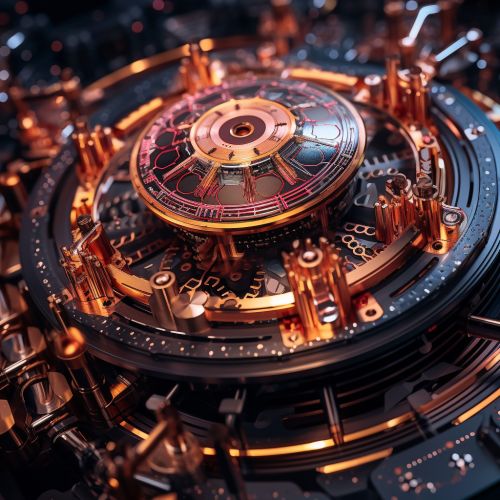Quantum Computing with Quantum Optomechanical Systems under Quantum Perturbations
Introduction
Quantum computing is a rapidly evolving field that leverages the principles of quantum mechanics to perform computations. One of the promising platforms for quantum computing is quantum optomechanical systems, which exploit the interaction between light and mechanical motion at the quantum level. These systems are subject to various types of perturbations, which can be quantum in nature. Understanding and controlling these quantum perturbations is crucial for the development of quantum computing technologies.


Quantum Computing
Quantum computing is a computational paradigm that uses quantum bits, or qubits, as the fundamental unit of information. Unlike classical bits that can be either 0 or 1, qubits can exist in a superposition of states, allowing them to represent 0 and 1 simultaneously. This property, along with entanglement and quantum interference, enables quantum computers to solve certain problems much more efficiently than classical computers.
Quantum Optomechanical Systems
Quantum optomechanical systems are physical systems in which the motion of a mechanical object is coupled to the state of a light field. The mechanical object can be a tiny mirror, a nanoscale beam, or a vibrating membrane, while the light field is typically confined in an optical cavity. The interaction between the mechanical motion and the light field can be controlled and manipulated at the quantum level, making these systems a powerful platform for quantum computing and information processing.
Quantum Perturbations
In quantum optomechanical systems, perturbations can arise from various sources, including thermal noise, mechanical vibrations, and quantum fluctuations. These perturbations can affect the state of the system and the outcome of quantum computations. Therefore, understanding and controlling these perturbations is a major challenge in the field of quantum computing.
Quantum Computing with Quantum Optomechanical Systems
Quantum optomechanical systems can be used to implement various quantum computing tasks, such as quantum state preparation, quantum gate operations, and quantum error correction. The mechanical motion and the light field can be entangled to create complex quantum states, which can be used as a resource for quantum computing. Moreover, the strong coupling between the mechanical motion and the light field allows for fast and efficient quantum operations.
Quantum Perturbations in Quantum Optomechanical Systems
Quantum perturbations in quantum optomechanical systems can have significant effects on the performance of quantum computations. For instance, quantum fluctuations of the light field can induce random phase shifts in the mechanical motion, leading to errors in quantum gate operations. Similarly, thermal noise can cause decoherence of the quantum state, reducing the fidelity of quantum computations. Therefore, a thorough understanding of these perturbations is essential for the development of reliable quantum computing technologies.
Controlling Quantum Perturbations
Various techniques have been developed to control quantum perturbations in quantum optomechanical systems. These include cooling the mechanical motion to its quantum ground state, using feedback control to suppress quantum fluctuations, and designing robust quantum operations that are insensitive to perturbations. These techniques are crucial for improving the performance and reliability of quantum computations.
Conclusion
Quantum computing with quantum optomechanical systems under quantum perturbations is a fascinating and challenging field of research. It combines the principles of quantum mechanics, optomechanics, and control theory to develop powerful and reliable quantum computing technologies. Despite the challenges posed by quantum perturbations, significant progress has been made in understanding and controlling these perturbations, paving the way for the realization of practical quantum computers.
